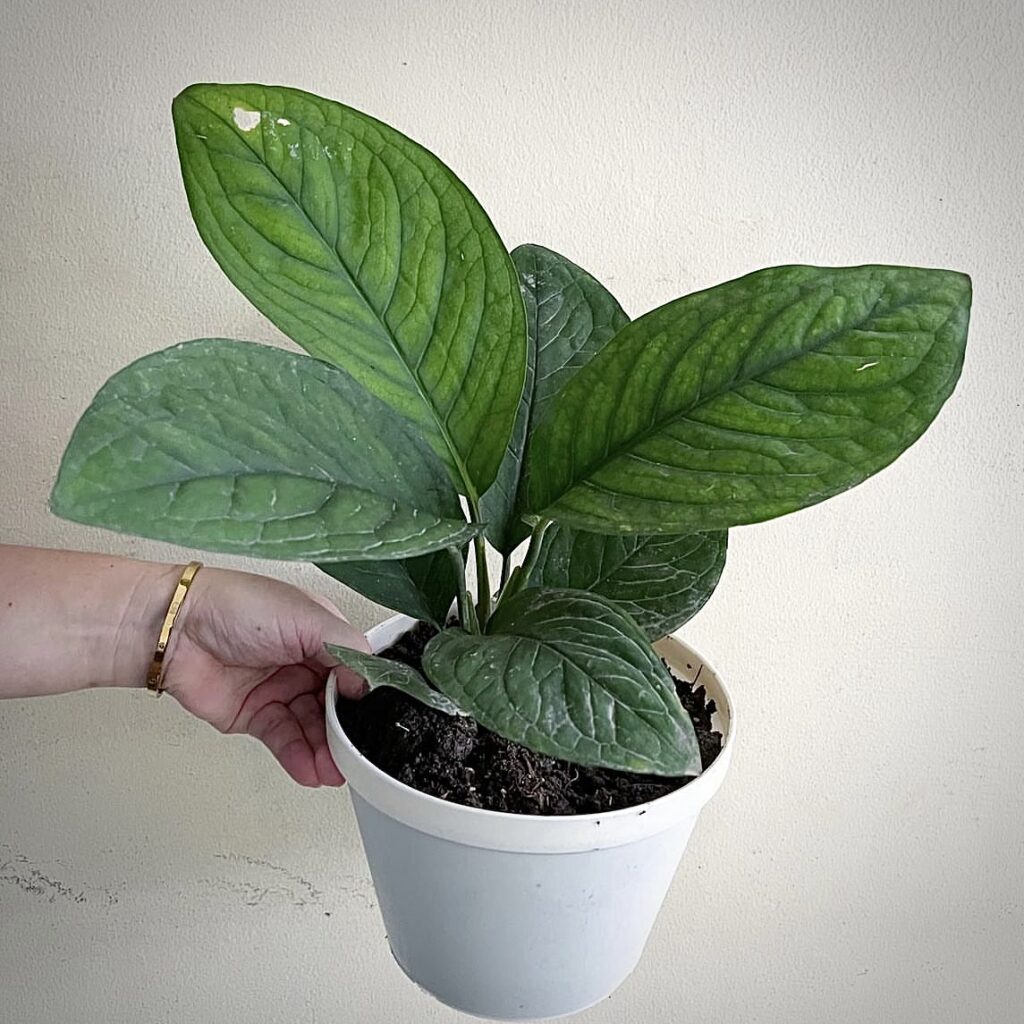A Unique Houseplant: The Majestic Anthurium
Introduction to This Unique Plant
Ever been captivated by the majestic beauty of the heart-shaped leaf plant? This tropical beauty, known for its glossy foliage and colorful spathes, is a sight to behold. But what makes it such an alluring addition to any plant collection?

Understanding the Origin of Our Leafy Star
History of This Tropical Wonder
This splendid species is native to South and Central America. It was first discovered in the 19th century and has since captivated horticulturists with its beauty. To delve deeper into the rich history and diverse varieties of this plant family, explore the diverse world of anthuriums and their origins in our extensive guide.
Habitat of The Heart-Leaf Plant
It thrives in humid, tropical forests, typically growing as an epiphyte (a plant that grows on other plants.
Physical Characteristics of Our Unique Plant
Plant Structure
The majestic plant boasts a sturdy stem and broad, glossy leaves that can reach over a foot in length. Its robust structure makes it a striking houseplant.
Leaf Structure
Its heart-shaped leaves are characterized by pronounced veining, giving the plant a unique, textured look.
Flower Structure
The inflorescences, or flowers, are known as spathes and are often mistaken as leaves due to their vibrant colors and large size.

"Discover the majestic beauty of the Anthurium jenmanii Click here to bring this exotic gem into your home today."
Caring for Your Tropical Beauty
Optimal Lighting Conditions
Anthurium jenmanii appreciates bright, indirect light. Be careful, direct sunlight can cause leaf burn!
Watering Your Unique Plant
Water it regularly but allow the top layer of soil to dry out between watering to prevent root rot.
Soil and Fertilization
It prefers a well-draining, rich soil mix. Regularly feed it with a balanced houseplant fertilizer during the growing season.
Pest Control and Common Issues
Look out for common houseplant pests such as mealybugs and spider mites. Overwatering can also lead to root rot.
To ensure your plant thrives and learn more about its care requirements, learn more about how to thrive anthuriums in your home through our detailed care guide.
Where to buy Anthurium jenmanii ? Benefits from importing plants from Thailand
Shipping: Door to door shipping, fast and safe with Dragon Courier
Biodiversity: Thailand is known for its rich biodiversity, including a wide variety of aroid species. This diversity allows importers to access a broad range of unique and exotic aroid plants.
Quality and Health of Plants: The suitable climate helps the plants grown here stay healthy and of high quality.
Cost-Effectiveness: Due to favorable growing conditions and efficient production methods, Thai aroid plants can often be more cost-effective compared to those from other countries.
Access to Hybrid Varieties: Thai growers are often involved in the development of new hybrid aroid varieties, offering unique plants that may not be available from other sources.
Anthurium species are the most sought after by aroid plant lovers
Propagating This Leafy Wonder
Propagation of our heart-shaped leaf plant can be done by division or stem cuttings during repotting.

For step-by-step instructions and helpful tips, discover effective methods for propagating anthuriums in our comprehensive propagation guide.
Uses of This Unique Houseplant
Apart from being a stunning houseplant, Anthurium jenmanii is also used in floral arrangements due to its long-lasting flowers.
Conclusion
Our unique plant, Anthurium jenmanii, is a magnificent specimen that offers a stunning visual and easy care for plant enthusiasts. With a bit of attention and love, this plant will surely reward you with its beauty.
Frequently Asked Questions
1. Is our unique plant easy to care for?
Yes, it is relatively easy to care for, making it perfect for novice plant enthusiasts.
2. How often should I water my heart-shaped leaf plant?
Water it regularly but ensure the top layer of soil dries out between waterings to prevent root rot.
3. What kind of light does Anthurium jenmanii need?
It needs bright, indirect light. Direct sunlight can scorch its leaves.
4. Can this unique plant be propagated?
Yes, it can be propagated through division or stem cuttings during repotting.
5. Are these plants toxic to pets?
Yes, they can be toxic to pets if ingested, causing oral irritation, excessive drooling, and difficulty swallowing.
https://bit.ly/3UApN4T
Nhận xét
Đăng nhận xét